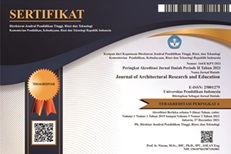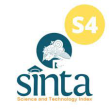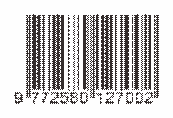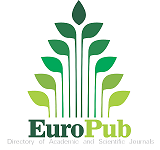RELATIONSHIP BETWEEN AN-AEROBIC THRESHOLD, LACTIC ACID, AND VO2 MAX. DURING THE GENERAL PREPARATION PERIOD WITH THE LONG DISTANCE RUNNING PERFORMANCE OF SEA GAMES ATHLETES
Abstract
This study aims to examine the significant relationship between an-aerobic threshold, lactic acid, and VO2 Max during the general preparation period and the long-distance running performance of SEA Games athletes. The method used in this research is a descriptive method which provides an overview of the variables studied and does not provide research treatment to the sample. The research design used is a correlational design by correlating or connecting the variables studied. The sample in this study was 6 athletes from the 2023 Cambodia SEA Games Indonesian National Training Center in long distance running. Instruments in the form of tests carried out at the FPOK UPI Sport Science Laboratory were given once to samples in December 2022 in the form of: a treadmill to measure VO2 max, an anaerobic threshold indicator in the form of a Polar to measure the anaerobic threshold, and a lactate meter to measure lactic acid. Data in the form of long distance running times for each athlete in the Athletics Championship competition held in November-December 2022 in Thailand and the Athletics Invitation and National Selection SEA Games held in January 2023 in Jakarta were collected. Data analysis was carried out using SPSS version 24 software. The results showed that an-aerobic threshold, lactic acid, and VO2 Max during the general preparation period had a significant relationship with the long-distance running performance of SEA Games athletes. Based on the conclusions above, this research provides implications for lactic acid, an-aerobic threshold, and VO2 Max. The periodization period for the general preparation stage is an important thing that long distance running athletes must pay attention to.
Keywords
Full Text:
PDFReferences
Baquet, G., F.X. Gamelin, P. Mucci, D. Thevenet, 2006 E. Van Praagh and S. Berthoin, 2010. Continuous vs. interval aerobic training in 8- to 11-year-old children. Journal of strength and conditioning research / National Strength and Conditioning Association, 24: 1381-1388.
Boutcher, S. H. (2011). High-intensity intermittent exercise and fat loss. Journal of Obesity, 2011,, 1–10. doi:10.1155/2011/ 868305
Borel, B., E. Leclair, D. Thevenet, L. Beghin, F. Gottrand and C. Fabre, 2011. Comparison of mechanical ventilatory constraints continuous and intermittent exercises in healthy prepubescent children. Pediatric pulmonology, Sciences, 3(S): 492-499. 46: 785-94.
Borzykh, A.A., I.V. Kuz'min, AA. Mart'ianov, A.S. Borovik, A.P. Sharova, O.S. Tarasova and O.L. Vinogradova, 2012. Changes of rat respiratory and locomotory muscles during aerobic exercise training in continuous and interval regimens. Biofizika, 57S: 880-887. Casamichana, D., J. Castellano and A. Dellal 2013. Influence of different training regimes on physical and physiological demands during small-sided soccer games: continuous vs. intermittent format. J. Strength Cond Res., 27: 690-697.
Capraro, R. M., & Capraro, M. M. (2002). Myers-briggs type indicator score reliability across studies: A meta-analytic reliability generalization study. Educational and Psychological Measurement, 62(4), 590–602. https://doi.org/10.1177/0013164402062004004
Daussin, F.N., J. Zoll, S.P. Dufour, E. Ponsot E. Lonsdorfer-Wolf, S. Doutreleau, B. Mettauer, A. Piquard, B. Geny and R. Richard, 2008. Effect of interval versus continuous training on cardiorespiratory and mitochondrial functions: relationship to aerobic performance improvements in sedentary subjects. American journal of physiology Regulatory, integrative and comparative physiology, 295: R264-272
Espen Tønnessen 1,*, Jonny Hisdal 2 and Bent R. Ronnestad 3, 2020. Inflfluence of Interval Training Frequency on Time-Trial Performance in Elite Endurance Athletes. Int. J. Environ. Res. Public Health 2020, 17, 3190; doi:10.3390/ijerph17093190
Fernando González-Mohíno1,3 • Jordan Santos-Concejero2 • Inmaculada Yustres1 • José M. González-Ravé1. The Efects of Interval and Continuous Training on the Oxygen Cost of Running in Recreational Runners: A Systematic Review and Meta-analysis. Sports Medicine https://doi.org/10.1007/s40279-019-01201-x
Fraenkel, J. R. (2012). How to Design and Evaluate Research in Education. McGraw-Hill.
Fraenkel, J. R., Wallen, N. E., & Hyun, H. H. (2012). How to Design and Evaluate research in education (8th ed.). New York: McGraw-HillCompanies.Inc.
Gibala, M. J., & Jones, A. M. (2013). Physiological and perform ance adaptations to high- intensity interval training. Nestle Nutrition Institute Workshop Series, 76, 51–60. doi:10.1159/ 000350256
Giriwijoyo Santoso. 2010. Ilmu Faal Olahraga (Fungsi Tubuh Manusia Pada Olahraga Untuk Kesehatan dan untuk Prestasi). Bandung:RemajaRosdakarya
Jèssica B. Bonet1 • José Magalhães2 • Ginés Viscor1 • Teresa Pagès1 • Casimiro Javierre3 •Joan R. Torrella1. (2020). High-intensity interval versus moderate-intensity continuous half-marathon training programme for middle-aged women. European Journal of Applied Physiology https://doi.org/10.1007/s00421-020-04347-z.
Kemi, O., & Wisloff, U. (2010). High-intensity aerobic exercise training improves the heart in health and disease. Journal of Cardiopulmonary Rehabilitation and Prevention. doi:10.1097/ HCR.0b013e3181c56b89
Mahmoud Al Desouky Ahmed, K., 2010. The Effect of a Training Program on the Pulse Rate, Lactic Acid and Some Components of the Body of the Beginners of Judo. World Journal of Sport Sciences, 3(S): 492-499.
McCrae, R. R., & Costa, P. T. (1989). Reinterpreting the Myers‐Briggs Type Indicator From the Perspective of the Five‐Factor Model of Personality. Journal of Personality. https://doi.org/10.1111/j.1467-6494.1989.tb00759.x
Mudrika, N., & Psi, S. (n.d.). MBTI, 1–17.
Ribeiro, C., L.T. Cambri, R.A. Dalia, M.B. Araujo, A.C. Ghezzi, L.P. Moura, G.A. Gustavo, J.D. Botezelli and M.A.R. Mello, 2012. Muscle protein metabolism in neonatal alloxan- administered rats: effects of continuous and intermittent swimming training. Diabetology and metabolic syndrome, 4: 5.
Shabkhiz, F., A.A. Ravasi, Z.M. Hassan, M. Taghikhani and T. Amininan Razavi, 2008. The Effect of Aerobic Continuous and Interval Training and Detraining on Some Indexes of the Cellular Immune System in Female Wistar Rats, 1: 17-26
Smart, N.A. and M. Steele, 2012. A comparison of 16 weeks of continuous vs intermittent exercise training in chronic heart failure patients. Congestive heart failure, 18: 205-211
Sugiyono. (2013) Metode Penelitian Pendidikan (Pendekatan Kuantitatif, Kualitatif, dan R&D). Bandung: Alfabeta.
Sukma prastiko alamanda, Fifit yeti wulandari, 2021 evaluasi pembinaan persatuan atletik seluruh indonesia kabupaten tulungagung.Universitas Negeri Surabaya.
Sunarno Basuki. KapasitasxVital Paru-Paru, Panjang Tungkai, Kekuatan Otot Tungkai Dan Prestasi Lari 800 Meter. JurnalVidyaKarya.Vol.31/No.1/April 2016: 64-71.
Zoran Milanovic´1 • Goran Sporisˇ2 • Matthew Weston3, 2015 Effectiveness of High-Intensity Interval Training (HIT) and Continuous Endurance Training for VO2max Improvements: A Systematic Review and Meta-Analysis of Controlled Trials. Springer International Publishing Switzer Sports Med DOI 10.1007/s40279-015-0365-0.
DOI: https://doi.org/10.17509/jare.v5i2.59898
Refbacks
- There are currently no refbacks.
Copyright (c) 2024 Journal of Architectural Research and Education

This work is licensed under a Creative Commons Attribution-NonCommercial-ShareAlike 4.0 International License.
Statcounter

This work is licensed under a Creative Commons Attribution-ShareAlike 4.0 International License.








